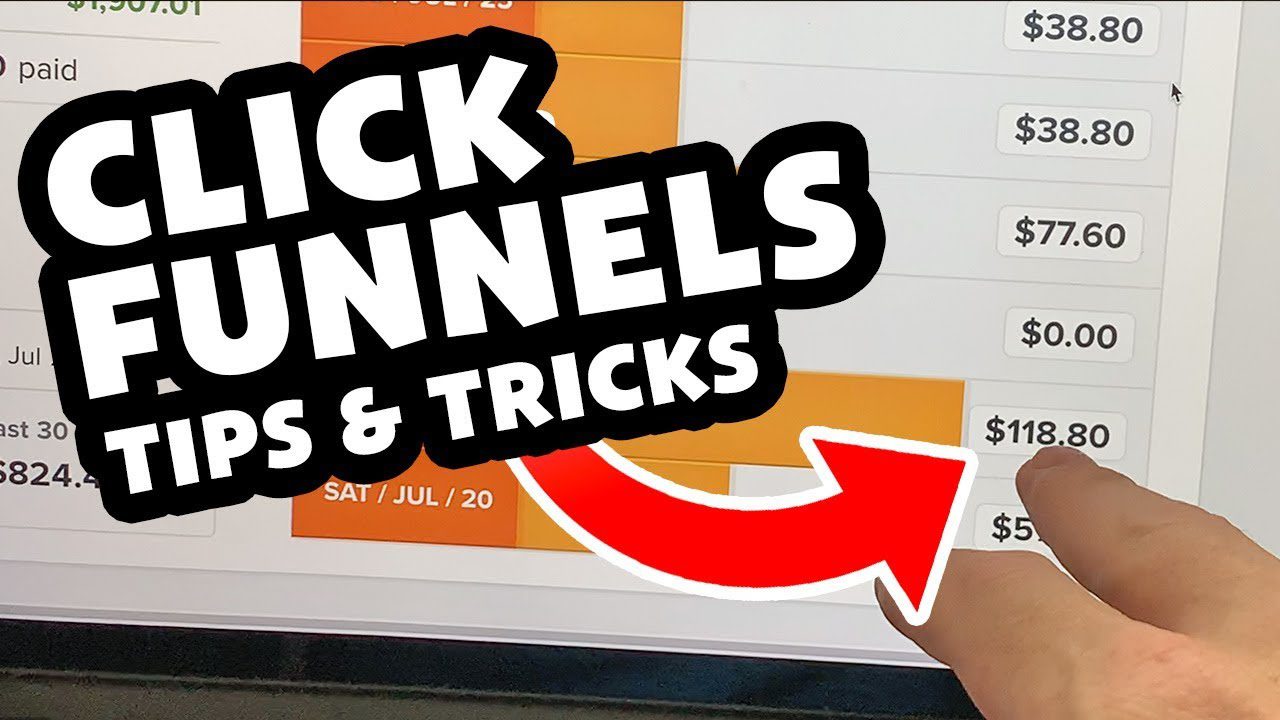Creating Engaging Blog Funnels with ClickFunnels
In the fast-paced world of digital marketing, creating landing pages that resonate with your target audience is nothing short of an art form. ClickFunnels, a popular platform designed to help businesses build effective sales funnels, is a powerful tool in your arsenal. However, the success of any landing page heavily depends on its copywriting – the carefully chosen words that persuade and captivate visitors. In this comprehensive guide, we delve into the world of ClickFunnels landing page copywriting, exploring its significance, strategies, and addressing frequently asked questions to help you master the craft.
Understanding the Essence of Copywriting in ClickFunnels Landing Pages
Copywriting goes beyond mere words; it’s the backbone of your landing page’s effectiveness. In the context of ClickFunnels, it’s the art of using persuasive language to compel visitors to take a desired action, whether that’s signing up, making a purchase, or downloading content. A well-crafted copy has the power to evoke emotions, build trust, and guide your audience seamlessly through the sales journey.
Key Strategies for ClickFunnels Landing Page Copywriting Success
1. Know Your Audience Inside Out
The foundation of any successful copywriting endeavor is a deep understanding of your target audience. Who are they? What problems do they face? What are their aspirations? Craft your copy to resonate with their needs, pain points, and desires.
2. Craft a Captivating Headline
Your headline is the first thing visitors see, and it needs to grab their attention immediately. Create a headline that addresses a specific pain point and offers a solution, making it irresistible for your audience to keep reading
Streamlining Business Success: Exploring ClickFunnels Integration with CRM Systems
In the dynamic landscape of modern business, efficiency and customer relationship management (CRM) are paramount. Enter ClickFunnels – a robust platform designed to create high-converting sales funnels. But what if you could enhance these capabilities further? This is where the integration of ClickFunnels with CRM systems comes into play. In this comprehensive guide, we unravel the synergy between ClickFunnels and CRM, delving into its benefits, implementation strategies, and addressing the most pertinent questions to help you harness this powerful combination.
Understanding ClickFunnels and CRM Integration
ClickFunnels, with its intuitive funnel-building prowess, empowers businesses to optimize their sales processes. A CRM system, on the other hand, acts as the centralized hub for managing customer interactions and data. Integrating ClickFunnels with a CRM system marries the conversion-driven capabilities of ClickFunnels with the customer-centric features of CRM, creating a seamless flow of information and nurturing leads into loyal customers.
Key Benefits of ClickFunnels and CRM Integration
1. 360-Degree Customer View
The integration bridges the gap between marketing and sales, providing a comprehensive view of each customer’s interactions. This insight enables personalized communication, leading to improved customer relationships and better-targeted marketing campaigns.
2. Automated Lead Nurturing
Automation becomes a game-changer. Leads generated through ClickFunnels can be automatically funneled into the CRM system, triggering tailored follow-up sequences. This ensures that no potential lead slips through the cracks.
3. Enhanced Analytics and Reporting
Detailed analytics are vital for refining strategies. The integration allows you to track the entire customer journey, from initial interaction to conversion, giving you valuable insights for optimization.
4. Efficiency and Time Savings
Manual data entry is minimized, reducing human error and freeing up valuable time. Seamless data synchronization means no more toggling between platforms, leading to streamlined workflows.
Implementing ClickFunnels and CRM Integration Successfully
1. Choose the Right CRM System
Select a CRM system that aligns with your business needs and integrates seamlessly with ClickFunnels. Popular choices include Salesforce, HubSpot, and Infusionsoft.
2. Map Out Your Sales Funnel
Before integration, have a clear understanding of your sales funnel. Identify touchpoints where data should flow between ClickFunnels and CRM. This ensures a smooth integration process.
3. Utilize Native Integrations or Third-Party Tools
ClickFunnels offers native integrations with several CRM systems. Alternatively, you can use third-party tools like Zapier to create custom integrations if needed.
4. Data Mapping and Customization
Configure data mapping between ClickFunnels and CRM fields. Customize automation triggers to match your sales processes, ensuring leads receive relevant communications.
5. Test and Optimize
Thoroughly test the integration to ensure data accuracy and workflow efficiency. Continuously monitor and optimize the integration to adapt to changing business needs.
Frequently Asked Questions (FAQs)
Q1: Is ClickFunnels integration with CRM suitable for all businesses?
Yes, businesses of varying sizes and industries can benefit from this integration. It’s particularly valuable for those seeking streamlined lead management and enhanced customer relationships.
Q2: Can I integrate ClickFunnels with multiple CRM systems?
Yes, it’s possible to integrate ClickFunnels with multiple CRM systems simultaneously. This can be useful for businesses with different departments utilizing different CRM platforms.
Q3: Do I need technical expertise to integrate ClickFunnels with CRM?
While technical knowledge can be helpful, many CRM systems offer user-friendly integration options. Additionally, third-party tools like Zapier simplify the process further.
Q4: Can I track the performance of ClickFunnels campaigns within my CRM?
Absolutely. Integration allows you to track campaign effectiveness and lead progression directly within your CRM’s reporting and analytics features.
Q5: What security measures are in place for integrated data?
Both ClickFunnels and reputable CRM systems employ advanced security measures to protect your data. Always choose CRM systems with robust security features.
Conclusion
Integrating ClickFunnels with CRM systems is a strategic move that harmonizes lead generation and customer management. It empowers businesses to nurture leads effectively, enhance customer experiences, and drive overall growth. By following implementation best practices and leveraging the benefits of automation and data synchronization, businesses can create a well-oiled sales machine that maximizes conversions and solidifies customer relationships.
















